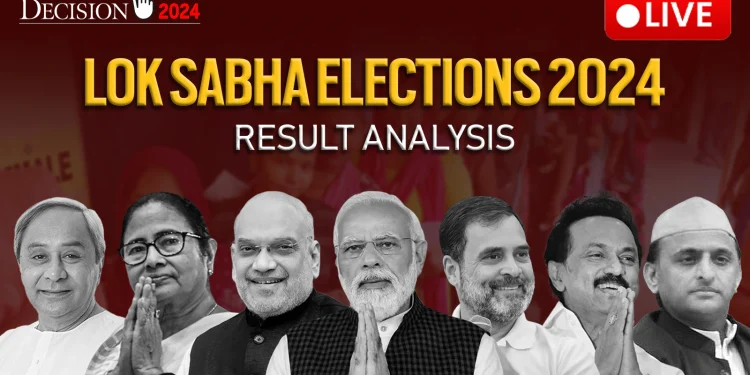Introduction
India’s General Elections 2024 marked a historic moment in the world’s largest democracy. With over 900 million eligible voters and a turnout of nearly 67%, the elections not only reflected the people’s voice but also set the stage for the country’s political and economic future. Here’s a breakdown of the results, key takeaways, and what lies ahead for India.
Election Overview
- Dates of Voting: April 19 to June 1, 2024 (7 phases)
- Total Seats: 543 in Lok Sabha
- Major Alliances:
- NDA (National Democratic Alliance) – Led by BJP
- INDIA Bloc (Indian National Developmental Inclusive Alliance) – Led by Congress
- Several key regional parties played decisive roles
Final Results
| Party/Alliance | Seats Won | Change from 2019 |
|---|---|---|
| BJP | 240 | -63 |
| Congress | 99 | +47 |
| TMC | 29 | +6 |
| DMK | 24 | -1 |
| SP | 37 | +28 |
| Others | 114 | Varies |
🔔 Key Highlight: BJP fell short of majority (272 seats) for the first time since 2014 and had to rely on allies like TDP (16 seats) and JD(U) (12 seats) to form the government.
Key States That Shifted the Game
- Uttar Pradesh: SP made a massive comeback, reducing BJP’s seat count
- West Bengal: TMC maintained dominance; BJP struggled to retain its 2019 gains
- Maharashtra: A fractured Shiv Sena helped Congress and NCP make significant gains
- Tamil Nadu: DMK led the INDIA bloc’s sweep, BJP failed to gain ground
- Karnataka & Telangana: Congress performed strongly
Prime Minister Modi’s 3rd Term – With Conditions
Although Narendra Modi secured a historic third term, it’s not the landslide he enjoyed previously. He now leads a coalition government, dependent on regional allies like Chandrababu Naidu (TDP) and Nitish Kumar (JD(U)), both known for changing loyalties.
This may lead to:
- More consensus-based governance
- Possible policy dilution on contentious issues (e.g., Uniform Civil Code, One Nation One Election)
- Focus on economy and jobs to address youth and middle-class concerns
Rise of the INDIA Bloc
The INDIA alliance, despite internal rifts, gained significant ground:
- Revived Congress performance under Rahul Gandhi
- SP and TMC emerged as regional kingmakers
- Showed that coalition politics is not dead
This revival indicates a stronger opposition inside Parliament, which may lead to:
- Increased accountability
- More robust debate and legislation scrutiny
Voter Trends & Takeaways
- Youth Turnout: High, but showed signs of anti-incumbency
- Women Voters: Continued to be a strong voting bloc, many backed welfare schemes
- Urban vs Rural: BJP maintained urban strongholds; INDIA bloc gained in rural belts
- Caste & Community: Played a major role, especially in UP and Bihar
Challenges for the New Government
- Unemployment and job creation
- Rising inflation
- Farmer distress and rural economy
- Balancing digital growth with data privacy
- Managing coalition expectations
- Geopolitical tensions (China, global trade)
What Lies Ahead for India?
- 2025 Budget will be the first test of the new coalition’s economic intent
- State elections in Haryana, Jharkhand, and Maharashtra later this year could shift power dynamics
- Expect more people-centric welfare policies and fiscal caution
- India’s role on the global stage (especially with the G20 legacy and BRICS expansion) is likely to grow
Conclusion
India’s 2024 elections proved democracy’s strength and unpredictability. As the NDA forms the government with a thinner margin, political negotiations, inclusive governance, and regional leadership will define the next five years. The electorate has spoken – demanding performance, not promises.
































































